Franco Grignani’s paintings reveal a hidden side of the graphic design legend

Everyone owns a Franco Grignani design – he’s the man behind the iconic Woolmark logo. A forefather of visual communication, and a successful graphic designer and art director, (notably at Pubblicità in Italia, an annual on Italian graphic design, where he worked for 26 years) Grignani was both a prolific creator and a supporter of the emerging graphic design scene in Italy. Yet as a painter, his work has perhaps been less explored in recent years.
In London, Grignani has not been seen for 60 years. ‘Grignani did not have gallery representation abroad despite having exhibited in many countries across Europe,’ explain M&L Fine Art partners Luca Gracis and Matteo Lampertico, who are bringing Grignani back this month. ‘In his case, being considered by many as a talented graphic designer meant that his paintings remained on the sidelines of critical debate around his work, as was the case with Bruno Munari, who also straddled the worlds of visual art and design.’
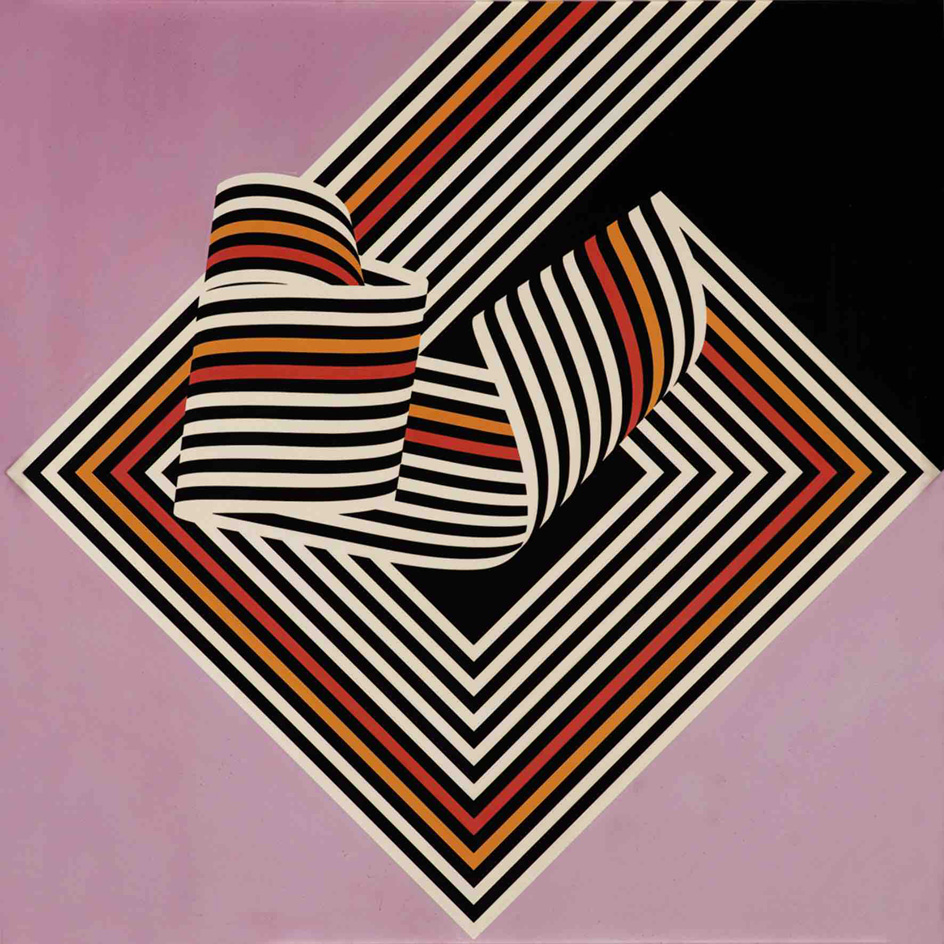
Dissociazione dal bordo,1967
The exhibition at M&L focuses solely on Grignani’s paintings, with 20 carefully selected works from 1952 up to 1975. The works chart, among other things, Grignani’s first use of colour, in 1967—with paintings such as Deriva and Dissociazione dal bordo, but his experiments with Op Art go back even further. ‘Grignani’s role and importance as one of the first Op Art artists of the period is still to be fully recognised. He was already experimenting with an Op aesthetic and techniques ten years before François Morellet or Bridget Riley,’ Gracis and Lampertico say.
Looking at paintings from the later period, such as Vibrazioni (1975) with their warping, distorting lines, it’s easy to see how ahead of his time Grignani really was – in painting as much as in design. Other innovations in his painting work include the introduction of textured industrial glass and emulsified canvases – giving the opportunity for further optical effects, never seen before.
His aesthetic wasn’t popular at the time – but perhaps now resonates with the new taste for ‘digital handmade’ in contemporary painting, merging traditional technique with the visual vocabulary of advanced technology. ‘His artistic language – a strong graphic presence – fits today’s tastes, especially among young people.’ It seems as though Grignani is long overdue a comeback – and this might only be the beginning.
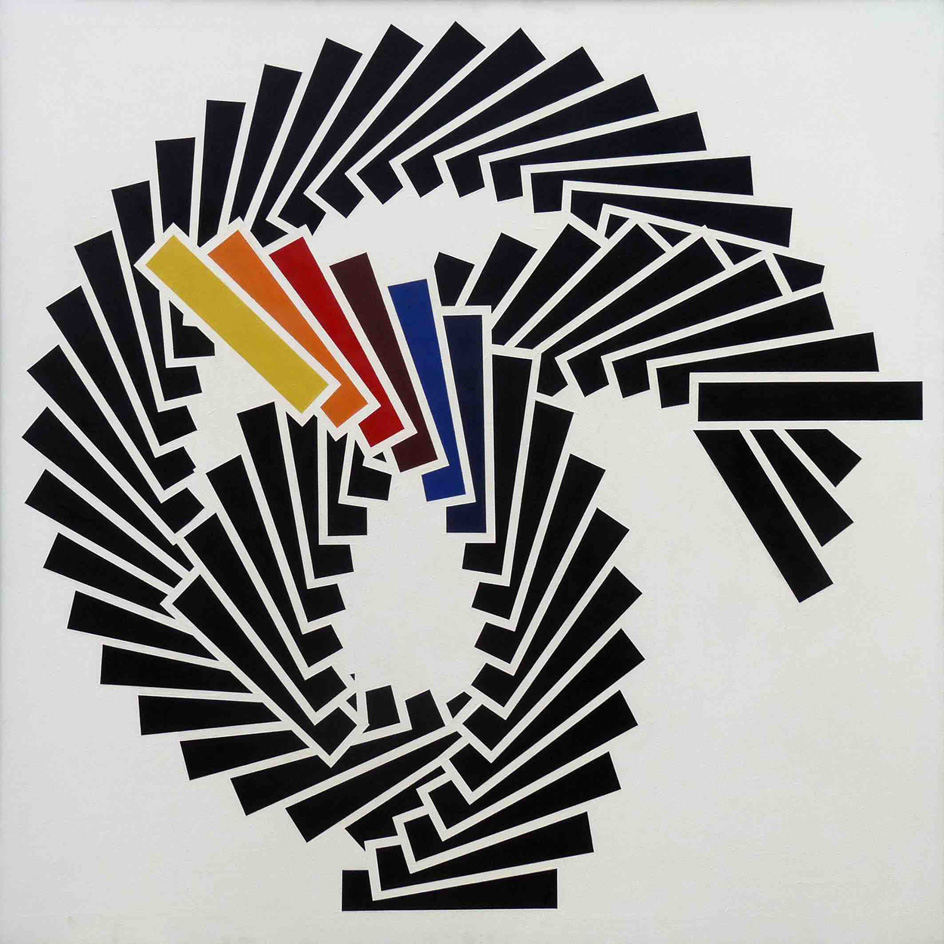
Deriva, 1967
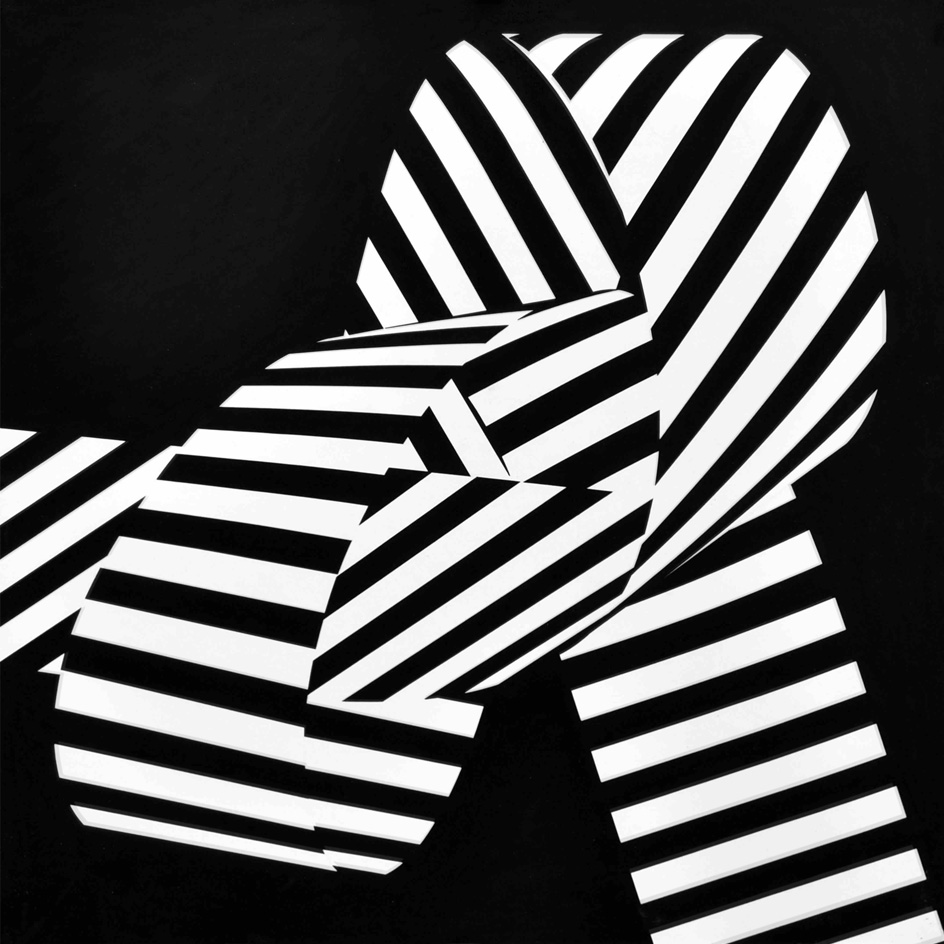
Dissociazione dal bordo, 1969
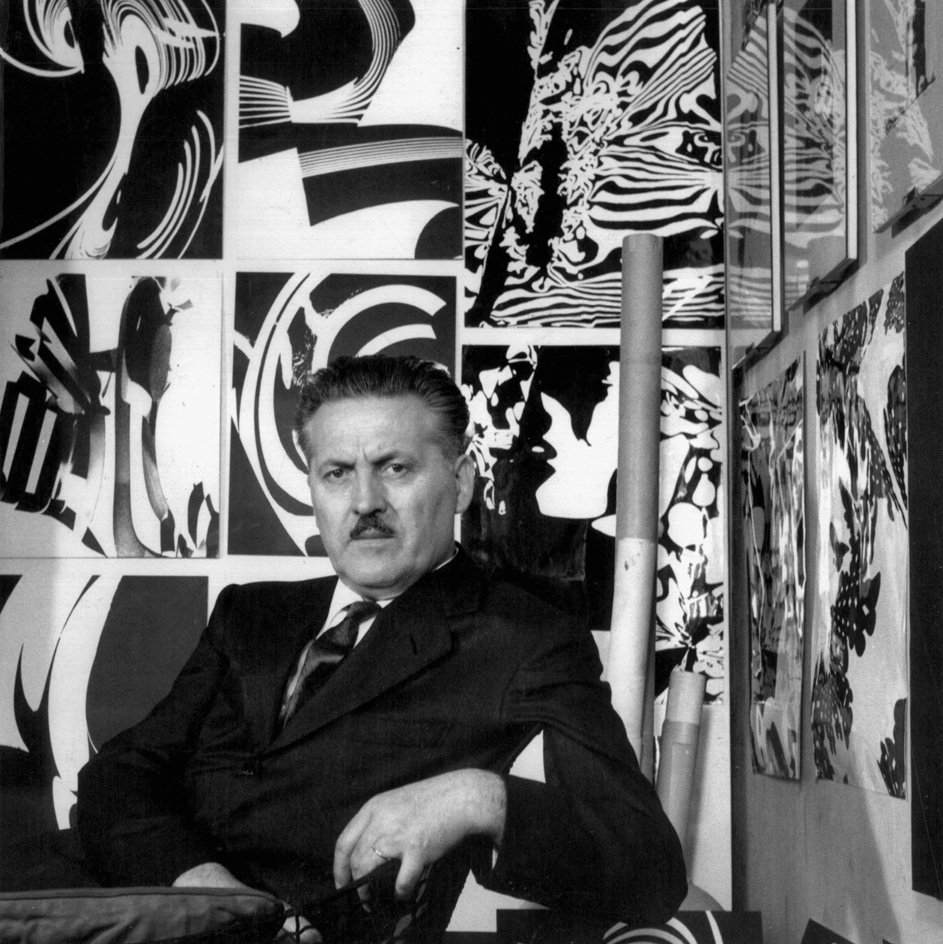
Franco Grignani in his studio
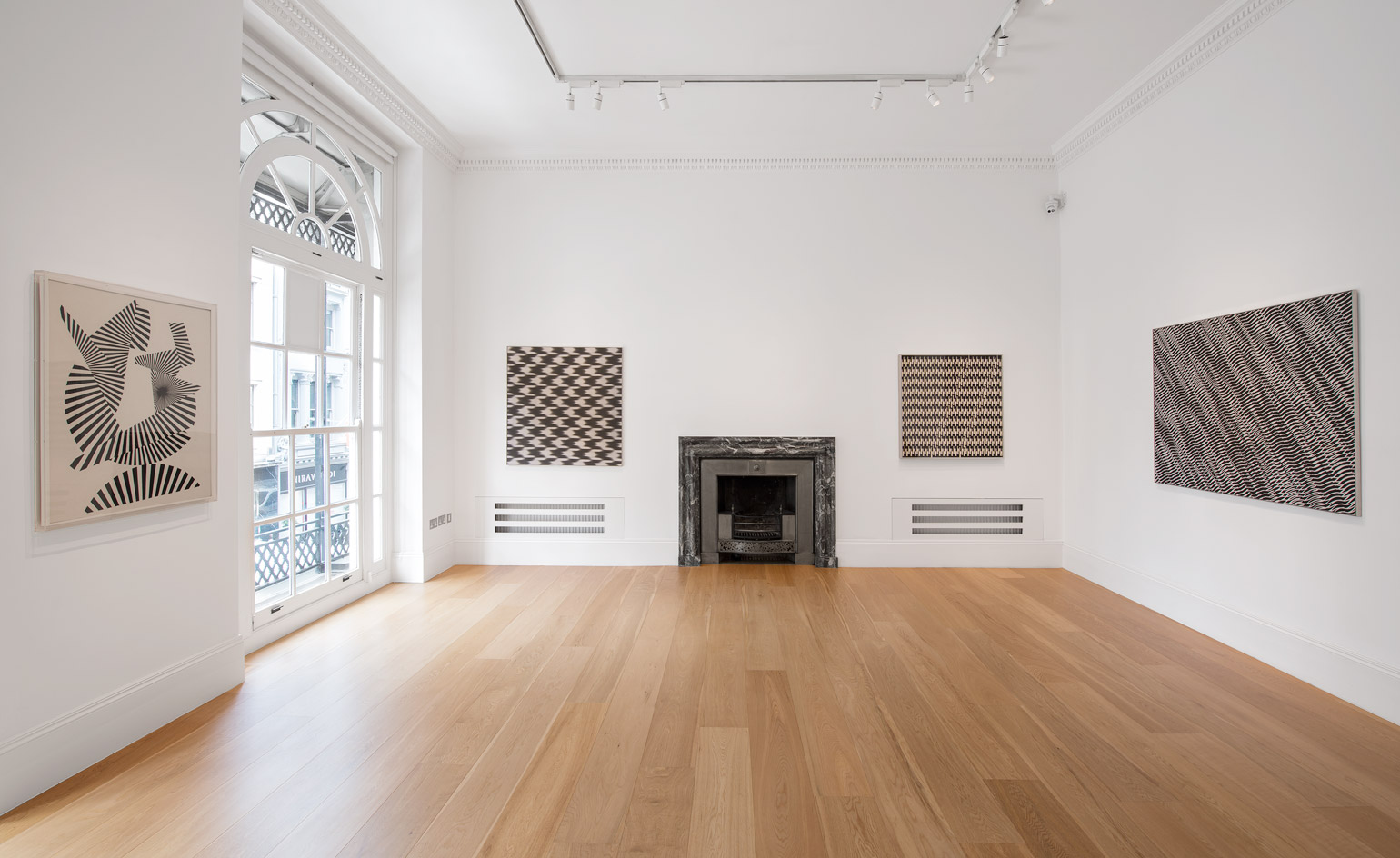
Installation view of ‘Franco Grignani’ at M&L Fine Art
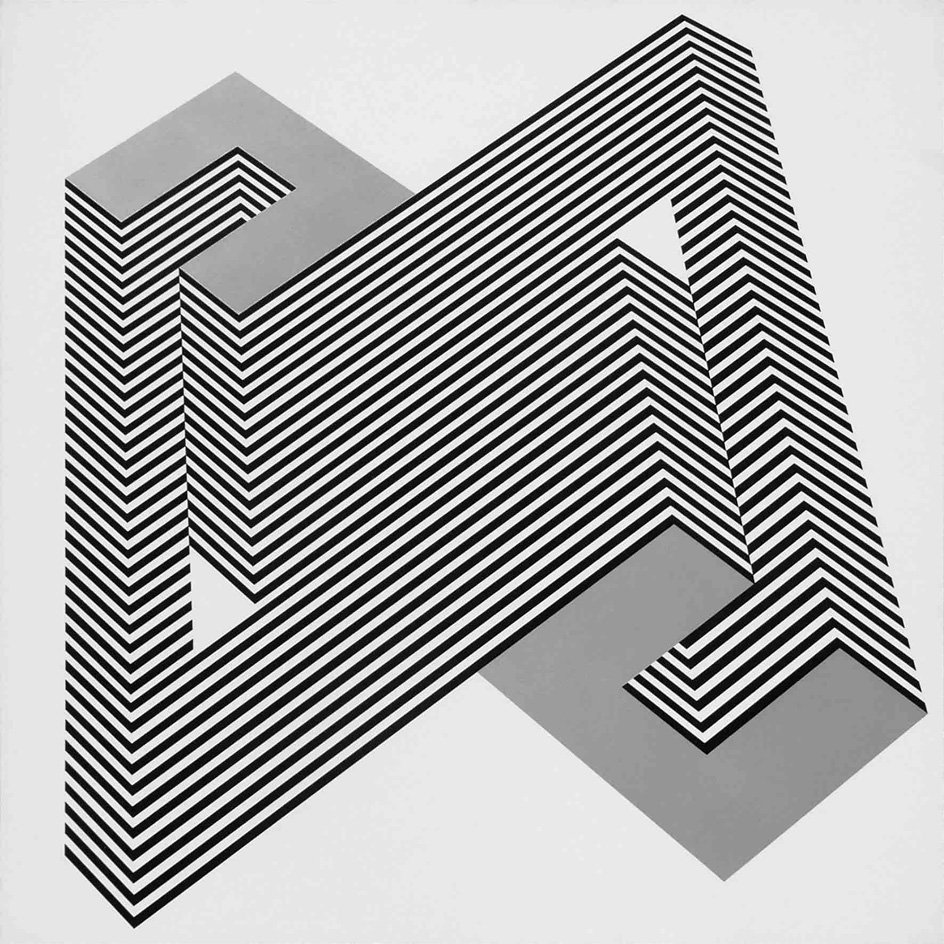
Psicoplastica, 1970
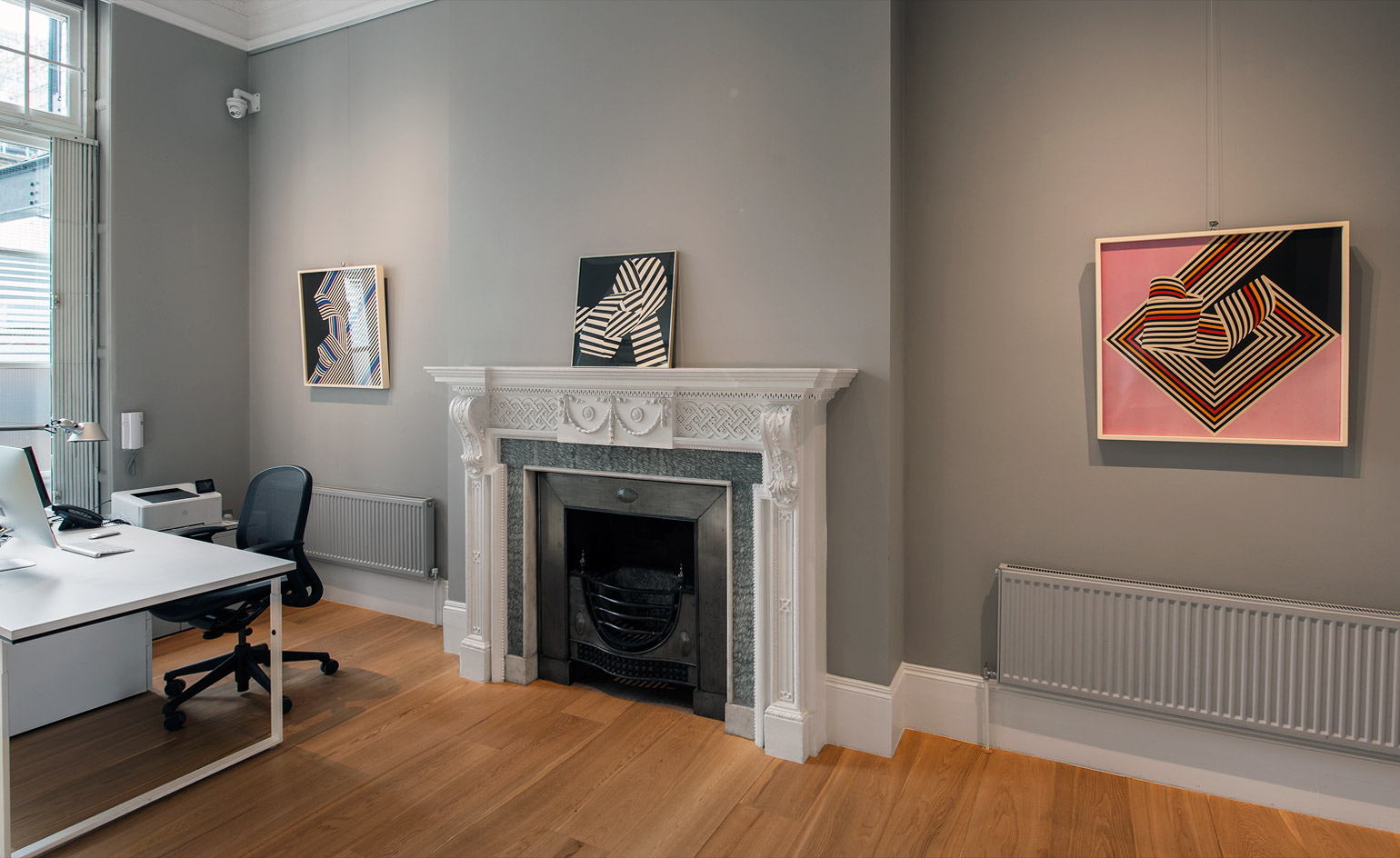
Installation view of ‘Franco Grignani’ at M&L Fine Art
INFORMATION
‘Franco Grignani’ is on view until 28 July. For more information, visit the M&L Fine Art website
ADDRESS
M&L Fine Art
15 Old Bond Street
London W1S 4AX
Receive our daily digest of inspiration, escapism and design stories from around the world direct to your inbox.
Charlotte Jansen is a journalist and the author of two books on photography, Girl on Girl (2017) and Photography Now (2021). She is commissioning editor at Elephant magazine and has written on contemporary art and culture for The Guardian, the Financial Times, ELLE, the British Journal of Photography, Frieze and Artsy. Jansen is also presenter of Dior Talks podcast series, The Female Gaze.
-
 A day in Ahmedabad – tour the Indian city’s captivating architecture
A day in Ahmedabad – tour the Indian city’s captivating architectureIndia’s Ahmedabad has a thriving architecture scene and a rich legacy; architect, writer and photographer Nipun Prabhakar shares his tips for the perfect tour
-
 You can now stay in one of Geoffrey Bawa’s most iconic urban designs
You can now stay in one of Geoffrey Bawa’s most iconic urban designsOnly true Bawa fans know about this intimate building, and it’s just opened as Colombo’s latest boutique hotel
-
 Pentagram’s identity for eVTOL brand Vertical Aerospace gives its future added lift
Pentagram’s identity for eVTOL brand Vertical Aerospace gives its future added liftAs Vertical Aerospace reveals Valo, a new air taxi for a faster, zero-emission future, the brand has turned to Pentagram to help shape its image for future customers
-
 Out of office: The Wallpaper* editors’ picks of the week
Out of office: The Wallpaper* editors’ picks of the weekFar from slowing down for the festive season, the Wallpaper* team is in full swing, hopping from events to openings this week. Sometimes work can feel like play – and we also had time for some festive cocktails and cinematic releases
-
 The Barbican is undergoing a huge revamp. Here’s what we know
The Barbican is undergoing a huge revamp. Here’s what we knowThe Barbican Centre is set to close in June 2028 for a year as part of a huge restoration plan to future-proof the brutalist Grade II-listed site
-
 Out of office: The Wallpaper* editors’ picks of the week
Out of office: The Wallpaper* editors’ picks of the weekIt’s wet, windy and wintry and, this week, the Wallpaper* team craved moments of escape. We found it in memories of the Mediterranean, flavours of Mexico, and immersions in the worlds of music and art
-
 Each mundane object tells a story at Pace’s tribute to the everyday
Each mundane object tells a story at Pace’s tribute to the everydayIn a group exhibition, ‘Monument to the Unimportant’, artists give the seemingly insignificant – from discarded clothes to weeds in cracks – a longer look
-
 Out of office: The Wallpaper* editors’ picks of the week
Out of office: The Wallpaper* editors’ picks of the weekThis week, the Wallpaper* team had its finger on the pulse of architecture, interiors and fashion – while also scooping the latest on the Radiohead reunion and London’s buzziest pizza
-
 Out of office: The Wallpaper* editors’ picks of the week
Out of office: The Wallpaper* editors’ picks of the weekIt’s been a week of escapism: daydreams of Ghana sparked by lively local projects, glimpses of Tokyo on nostalgic film rolls, and a charming foray into the heart of Christmas as the festive season kicks off in earnest
-
 This Gustav Klimt painting just became the second most expensive artwork ever sold – it has an incredible backstory
This Gustav Klimt painting just became the second most expensive artwork ever sold – it has an incredible backstorySold by Sotheby’s for a staggering $236.4 million, ‘Portrait of Elisabeth Lederer’ survived Nazi looting and became the key to its subject’s survival
-
 Wes Anderson at the Design Museum celebrates an obsessive attention to detail
Wes Anderson at the Design Museum celebrates an obsessive attention to detail‘Wes Anderson: The Archives’ pays tribute to the American film director’s career – expect props and puppets aplenty in this comprehensive London retrospective